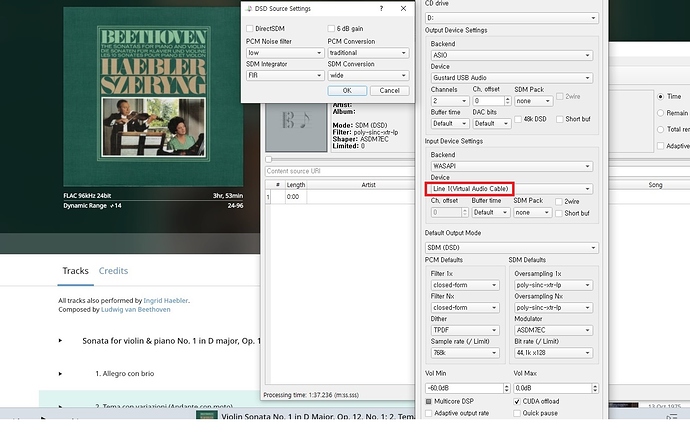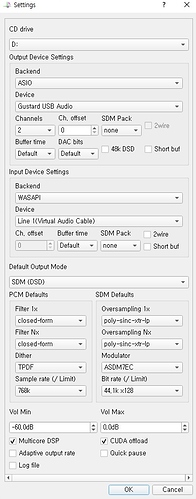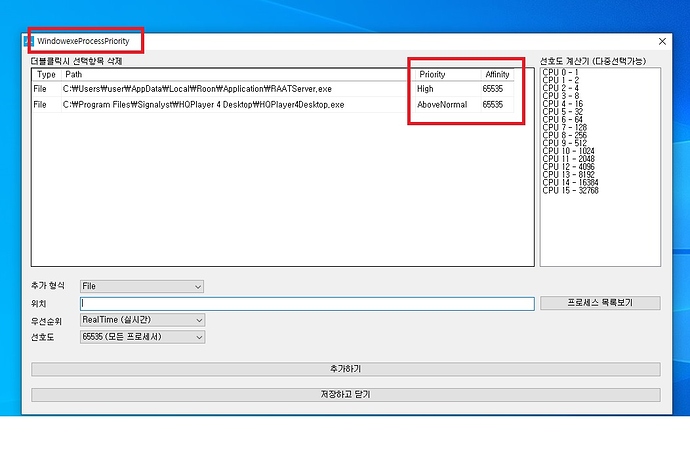B&W tend to the bright side I’ve read many times over the years. Nice you found one that tames them.
I’m not doing anything to them no, but they definitely sound different.
I get audio black outs and pops from version 4.7 on. 4.7.2 is even the worst one.
I use a 9900 intel, win 10, running DSD256 and ASDME7C.
I switched back to version 4.6, which works fine.
Same here.4.6 works though.
I’ve been experiencing dropouts and stutters. I changed to ASDM5EC which is working fine so far.
I found my choice of setting (Embedded 4.19) working good on equipment. I use a set of JBL LSR 4328P and corresponding subwoofer, they are a bit old, so the digital input is only 24/96 AES3, daisy chained between the monitors and subwoofer.
24 bit depth conversion in Roon to utilize clip indicator -> HQPlayer; poly-sinc-ext2, shaped dithering and upsample to 96K. It has a marvellous sound stage, fairly dynamic but not overly hitting drums. There is no sibilance at all. All thoughts about bad recordings are gone, I can enjoy any old metal from 1980’s that cut my ears like lazer swords prior to HQP. Still digtal clipping (from master) might be present but now audible, still enjoyable and not keeping me from listening.
Out of curiosity, is the a more suitable, even more silent dithering than “shaped”? Suggestions on an equally spacious filter, but slightly harder hitting transients, but without any echoes, ringings, well below my very sensitive ears? What strikes me with the above, current setting is the exceptional start-stop time for transients. My subwoofer does not sound like the typical subwoofer, it is perfectly aligned low extension with no life of its own. The phraising is excuisite, but lacking the little extra umph at e.g. Jennifer Warnes - bird on a wire.
It should be notes that my rig have been extensively modified to cure the dc-shift causing noisy mid-bass, so there are virtually no remaining mid-bass masking. The depth in room is below 20 Hz. Just that little extra transient response? Open to suggestions! 
I have settled on the following configuration:
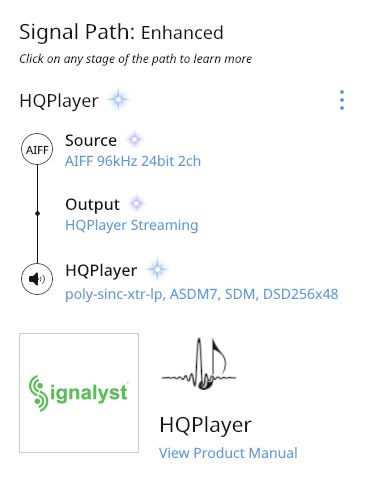
if your system can handle it
No use in trying poly-sinc-xtr-lp-2s, that will most probably not make the difference with EXT2, what you are looking for.
My 2 cents
Dirk
Ext2 and xtr are both “longer” filters. Jussi has noted that ext2 surprised him with a better transient response than usual in a longer filter.
Shorter filters, like minring or poly-sinc shrt may have better transient response, and the mp versions will avoid pre-ringing (which people have mixed views about). Longer filters and lp filters, however, are usually regarded as more spacious.
Transient response vs. space is one of the traditional trade offs for digital audio filters. If you find a better compromise than ext2, let us know.
Thanks for sharing, I cannot reach the level of upsampling suggested, since my JBL studio monitors are few years now and stops at 24/96 using AES3 input. 
I can understand that, it is only a minimal attack increase I wish for. As my dear friend who is running a sound engineer company in the film industry said; “the sound stage is rediculous, you don’t need a home cinema system ever”. I agree, I love the spacious, airy 3D perception.
What about the dithering, then? Is there any option that is pitch black silent. My choice of music is bombastic metal like Gothic, e.g. Nightwish and they are producing very well. There are so many tiny details in their arrangements, I would like to suppress the digital signal path to the best there is. I have gone many miles extra for reducing mains noise, screen noise and computer network noise and as much of the inputs that I can find the introduce noise in signal ground, I have tried to reconfigure according to the old, well-known, but rarely implemented, interconnect shield to chassis ground instead of the idiotic way to solder it on to the signal ground on the pcb. So, the rig is very silent, but there is always something left to try … 
Hi Stefan
Do not worry about the resolution too much. The type of filtering & dithering has much more impact than resolution.
Do try the XTR-mp filter (minimum phase filter, should give better transients - see manual)
If you want to go even further, try the Closed Form filter (or any varuant of that). This is not an apodising filter, producing a very ‘direct’ sound.
Good luck in experimenting
Dirk
I mostly used ext2 and short-mp (and a little sinc-s) when up-sampling PCM, but now I am trying my RME ADI-2 DAC with DSD. However, I run it on my desktop PC (will get a NUC later on) so I want something that don’t take to much CPU.
With this in mind, what DSD filters and settings should I use? Here is what I currently use
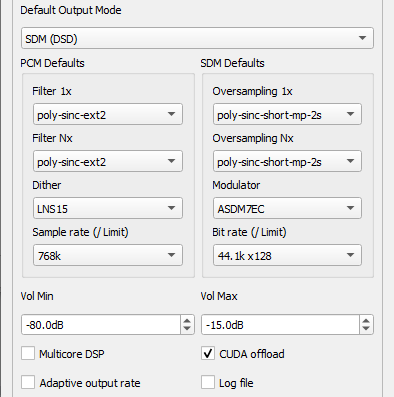
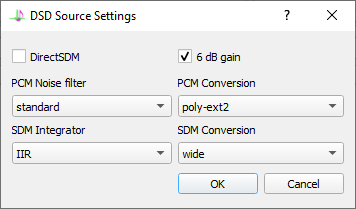
I have been using the following for a while now and stuck with them:
PCM: Sinc - M, LNS15 up sample to PCM 384.
DSD: Sinc - M, ASDM7EC up sample to DSD128
So so so good.
Thanks guys for your contribution. DSD will be off my reach, but it is interesting to see your Dither choises for PCM, Today Shaped, as it seem good för around 96K according to Jussi.
I have never managed to hear any differences between different ditherings, maybe because I output 32 bit into a 32 bit DAC over USB.
TPDF and Gauss1 should be fine too, just remember to set “DAC Bits” in HQPlayer to 24-bit!
And I’d leave any processing at Roon side disabled. And set HQPlayer volume at -3 dB (you can control this from Roon side).
ext2 is a good filter choice, you can try others too, but it is very good all-rounder. For some particular genres/productions you may find some other filter to be preferable.
The only significant difference when I tested different settings with my ADI-2 DAC was when the dithering was completely off. No other setting was giving such space on my set. For PCM I had the best results using SINC-M, upsample at 768kHz (or 384 if I wanted to use the built-in DSP in DAC) and dithering set to None. Soundstage is simply amazing.
Hi Jussi,
Why do you recommend setting to 24-bit? Do you recommend 24-bit for DACs that support 32-bit?
I found the reason: Which HQP Filter are you using?
